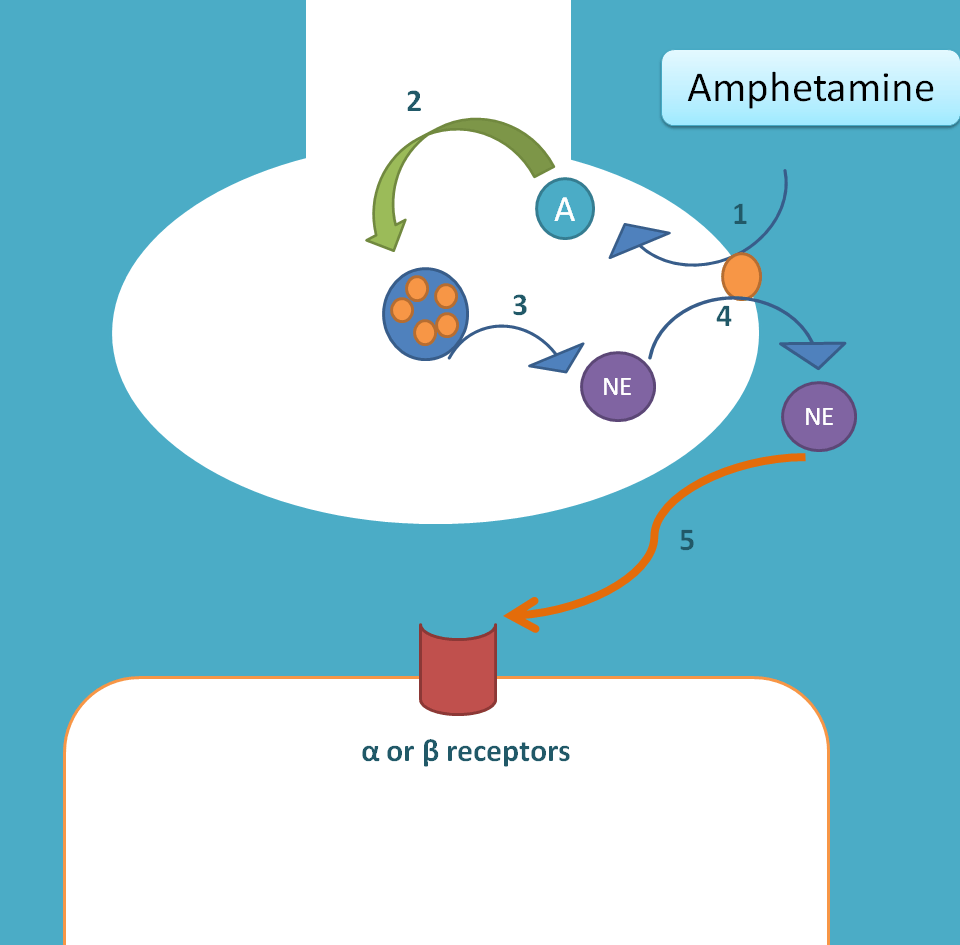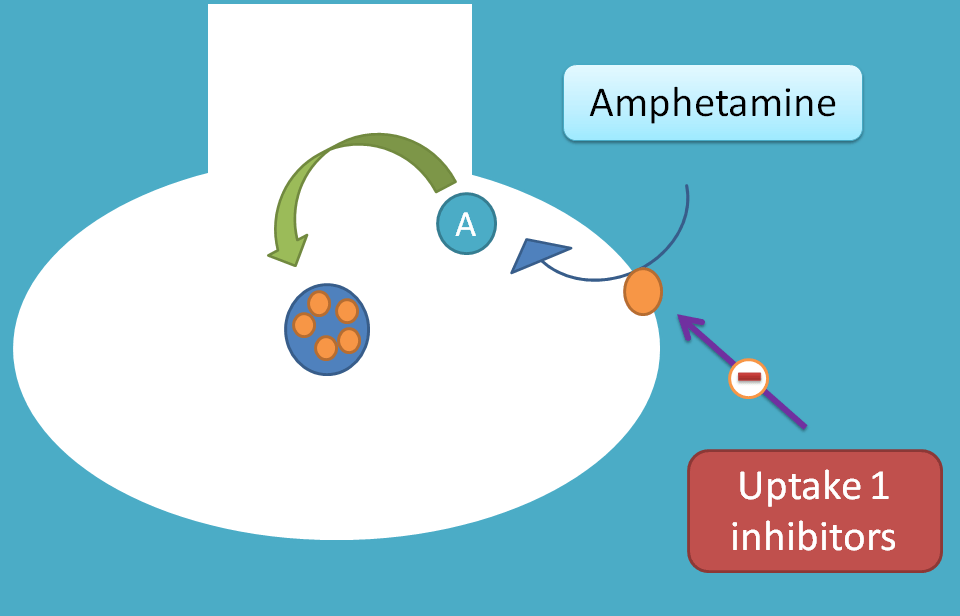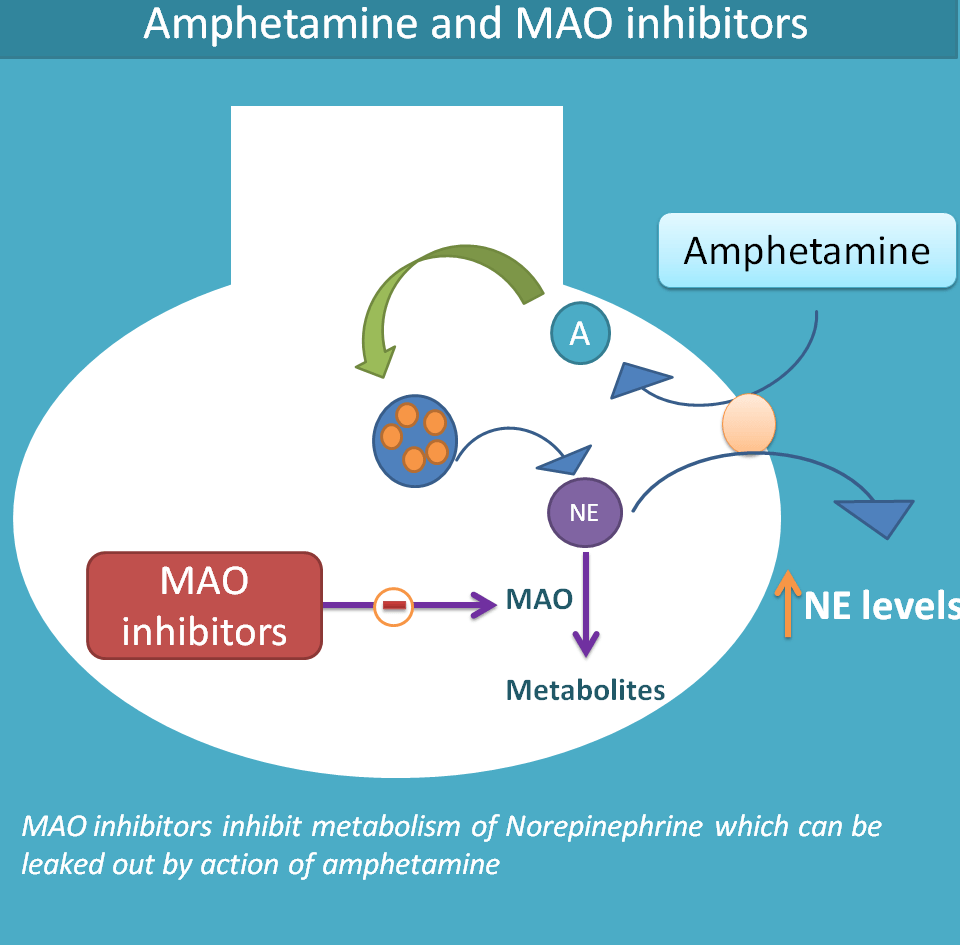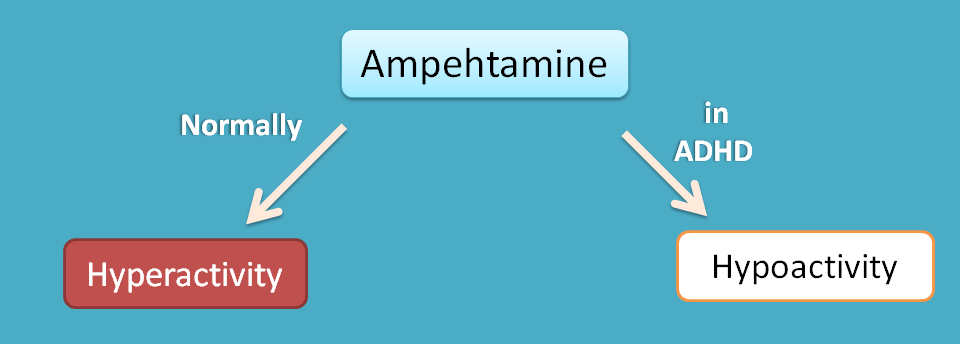Amphetamine
How it acts?
In order to displace norepinephrine from storage vesicles a drug should have more affinity for
- uptake into nerve terminal
- storage in to the vesicles
Amphetamine and tyramine are such drugs that they are readily taken into the nerve terminal by uptake 1 process. Once absorbed into the nerve terminal, they displace norepinephrine from storage vesicles.

This displaced norepinephrine then leaks into synaptic cleft by exchange with one molecule of amphetamine. In this way, norepinephrine goes out of the nerve terminal and while amphetamine inside. This finally results in to increased norepinephrine levels at synaptic cleft which increases adrenergic transmission.
Pharmacological actions
Amphetamine primarily acts on CNS producing various central actions along with few peripheral actions. All central actions are stimulatory in nature.
Few of the important actions are
- Increase in memory
- Alertness
- Hyperactivity
- Decreased fatigue
- Insomnia
- Loss of appetite
- Euphoria
Few of the peripheral actions include
- Increased blood pressure
- Cardiac stimulation
Side effects
Again the side effects are mainly due to central stimulation. They include
- Insomnia
- Restlessness
- Confusion
- Palpitations
- Tachycardia
- Hypertension
- Nausea
- Diarrrhea
Addiction is one of the serious problem with amphetamine and its derivatives.
Drug interactions
Two drug interactions are important with these drugs.
- With uptake inhibitors
- With MAO inhibitors
Interaction with uptake inhibitors
The first step in the action of indirectly acting sympathomimetics is their entry into nerve terminal by uptake 1. So drugs like cocaine and tricyclic antidepressants can inhibit uptake1, therefore prevent entry of indirectly acting agents decreasing their action.

Interaction with MAO inhibitors
Monoamine oxidase (MAO) is a cytosolic enzyme that metabolises free norepinephrine that is not stored in the vesicles. So when indirectly acting drugs displace norepinephrine it is partly leaks in to synaptic cleft and partly metabolised by MAO.

So in presence of MAO inhibitors, this metabolism is prevented leading to increased leak of norepinephrine into synaptic cleft increasing adrenergic transmission.
Another type of interaction is also possible with MAO-B enzyme. This enzyme is responsible for metabolism of amine type drugs within the gut wall. Again MAO inhibitors block this metabolism, increasing plasma levels of amphetamine and tyramine leading to severe hypertension.
Indications
It is mainly used for
- Attention deficit hyperactivity disorder (ADHD)
- Narcolepsy
- CNS stimulant
ADHD
ADHD is a hyperactivity disorder particularly observed in children with lack of proper attention and responsiveness. Amphetamine is again a hyperactive agent surprisingly decreases hyperactivity in these children.

Narcolepsy
In narcolepsy, patients suddenly fall into sleep during day time without any control. These sudden episodes of sleep can be minimized by amphetamine increasing alertness and wakefulness.
Amphetamine can also be used as general CNS stimulant